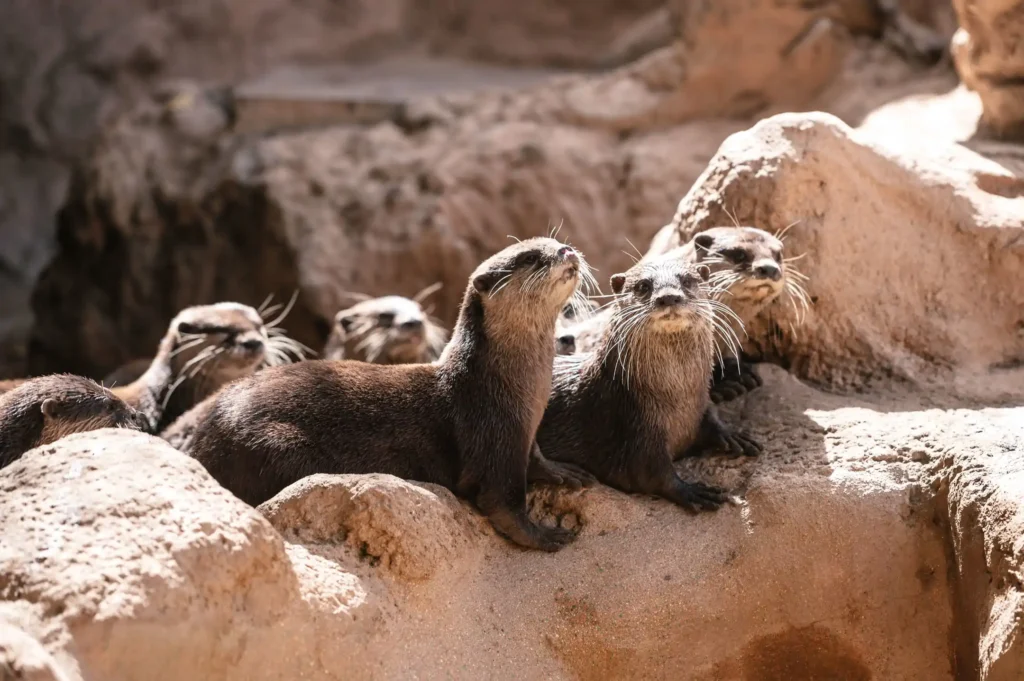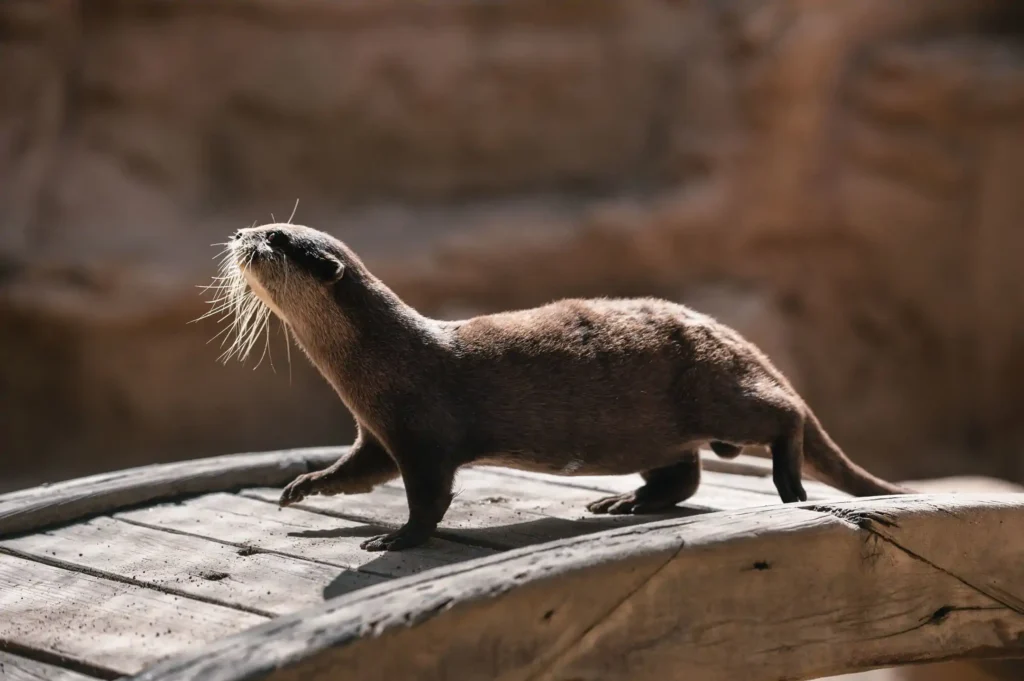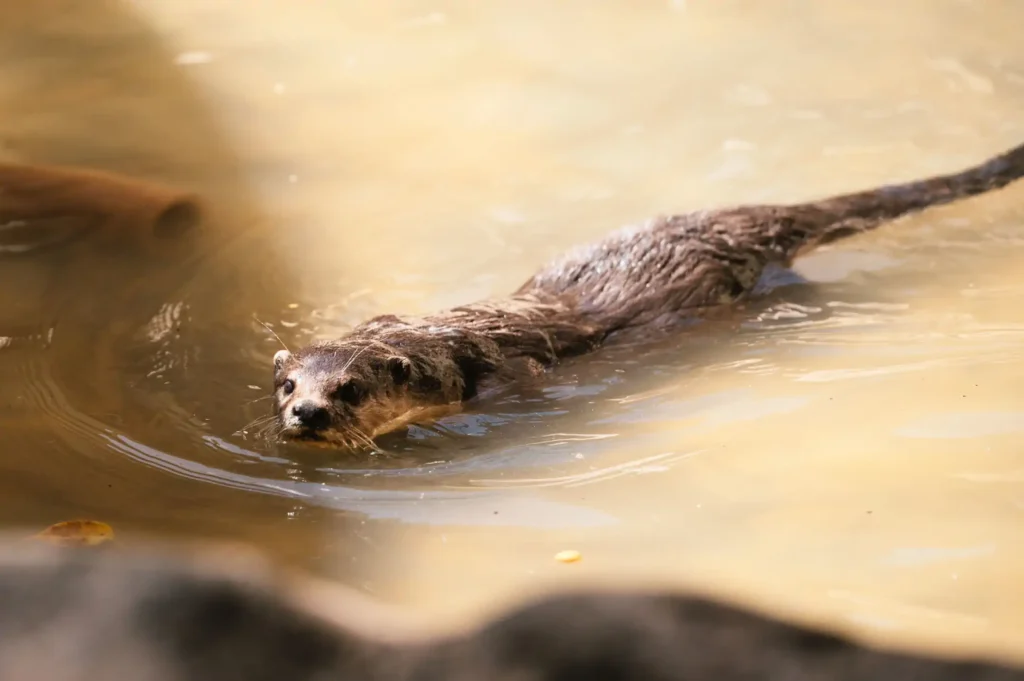The Asian small-clawed otter is the smallest otter species in the world.
Physical features
Weighing no more than 4 kg, their name comes from their very small claws, which do not protrude beyond the ends of its digital pads although they are partially webbed which helps them swimming.
They have a small head with powerful teeth which they use to crack into their prey.
Habitat
This small mammal lives in wetland systems with slow currents or stagnant waters, such as pools, river meanders, mangroves and small shallow lagoons.
Their geographical distribution is the southeast Asian region, with a larger presence in the west of the Java island. They also live in shallow and slow current waters in India and Thailand.
Diet
They have a varied diet although they eat mostly crabs and fish and sometimes insects.
Their molars are broad and robust adapted for crushing the exoskeleton of crabs and some shells.
Reproduction
Female otters reach sexual maturity at 2 years of age and males at approximately 2.8 years.
Asian small-clawed otters have a 28-day oestrous cycle and they can breed throughout the year. After a gestation period of 68 days, females give birth to a litter of 2 to 7 pups.
Behaviour
These animals use to live in small groups made up of a mating pair and several generations of descendants.
Pups start swimming alone at two months of age, when they start learning to hunt.
Threats
The main threats to Asian small-clawed otters result from human activities such as the destruction of their habitat, overfishing and the subsequent reduction of resources, traps laid for other animals but in which otters are also hunted and natural predators.
All this has made the number of adult individuals progressively decrease.
Status and conservation
Ranked as “Vulnerable” (VU) in the UICN’s Red List.





